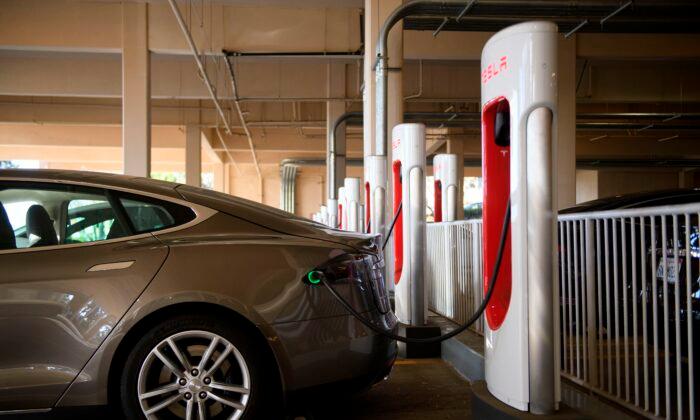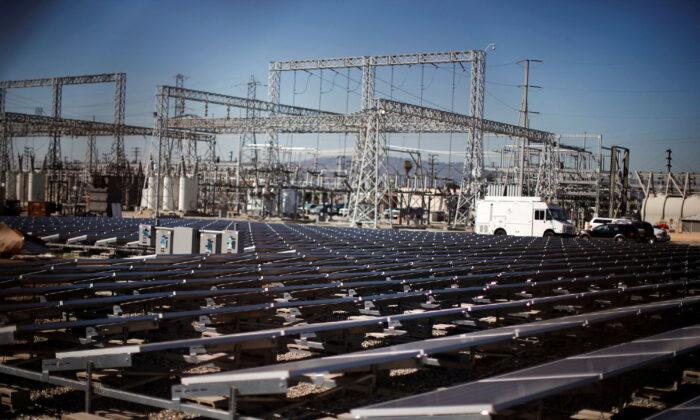Commentary
On April 12, the California Air Resources Board (CARB) continued Gov. Gavin Newsom’s fantasy of banning all gas- and diesel-powered vehicle sales by 2035. It published a
notice of a June 9 public hearing “to consider the proposed Advanced Clean Cars II (ACC II) rulemaking.”
The main purpose: “The proposed regulations will increase the stringency of existing regulations to … transition new light-duty vehicle sales in California to 100 percent zero-emission by 2035.” That’s the same as Gov. Gavin Newsom’s 2020 Executive Order.
This is an old story in California. CARB’s first ZEV regulation from 1990 mandated 2 percent of sales be ZEVs by 1998 and 10 percent by 2003. It produced close to zero results because the technology wasn’t near ready.
But sales of ZEVs have improved in recent years, as one can see with all the Teslas and other electric cars on the road. On Feb. 25, the governor’s office
noted, “Over the past 10 years, annual sales of plug-in electric vehicles in California have gone from just 7,000 in 2011 to more than a quarter of a million sold in 2021, making up more than 12 percent of all light-duty vehicle sales last year.”
But 12 percent in 2021 still is a long way from 100 percent in 2035.
A big problem is ZEVs cost a lot more than traditional gas-powered vehicles for the same body style, indoor room and luxury class. As auto reporter Eric Peters
wrote on his site, what’s driving ZEV sales now is rich people consider them premium vehicles.
However, “electric cars cannot be people’s cars. This being a function of their cost, which isn’t going down. In fact, it is going up—because the cost of everything is going up. Including the materials necessary to put together electric cars, which already cost so much more than the materials necessary to put together non-electric cars that an entry-level electric car such as VW’s ID.4—which is a compact-sized crossover similar to a (non-electric)
Taos—stickers for $40,760 to start vs. $23,295 for the Taos.
“In other words, twice as much (almost) for just about the same. Less, actually – given that the non-electric Taos goes 475 highway miles on a tankful vs. about half that far (245 miles) in the ID.4.”
CARB actually thinks it can get around these obvious bottlenecks to 100 percent ZEV sales. Its notice of the June 9 hearing spoke glowingly of “proposed ZEV assurance measures,” which “will help ensure consumers can successfully replace” their rusting old gas guzzlers with shiny new ZEVs. The measures included:
- minimum warranty and durability requirements;
- increased vehicle serviceability;
- streamlined charging and battery labeling.
A big problem with these proposals is California would become like Communist Cuba, where people still drive classic 1950s cars because socialism prevented people from affording new ones imported from America, Europe, or Asia. Under the ZEV 2035 mandate, Californians will just keep driving older, gas-powered cars many more years. Or they will bring such cars across the border from other states, legally or illegally.
Meanwhile, as the state’s population keeps dropping, fewer overall cars will be needed. Permanently higher gas prices also will push people to drive less, use mass transit or move to a state with much cheaper gas, such as Texas.
The mandates are intended to inspire other states to impose similar limits. But so far only other liberal states have done so.
Reported Advanced Clean Tech News on April 1, “Illinois Poised to Join California, N.Y. as Clean Transportation Leader.” But these high-tax, badly run states also are losing population. As did California, both those states lost one congressional seat after the 2020 U.S. Census. So Congress is going to be less likely to impose national ZEV mandates.
Conservative states are in no rush to emulate those liberal states. And such oil-producing states as Oklahoma, Texas, North Dakota and Alaska obviously will be the last to jump on an electric-powered bandwagon.
As with so many other things, such as housing, in California driving will be something done by the moneyed elite. The middle class will be squeezed one more time, or just leave.
Meanwhile, the gains to the atmosphere will be marginal. California already imposes stringent tailpipe emissions regulations that have been highly effective. The main cause of greenhouse gases in California is wildfires, which the state only partly is fighting. It ought to underground all power lines before stretching out new ones to bring in from other states the electricity needed for all the new electric cars.
And even wildfire emissions are dwarfed, as I
wrote in The Epoch Times last August, by China’s greenhouse gases produced from its vast use of new coal plants, something likely to be accelerated with the recent increase in oil and natural gas prices.
In sum, the 2035 ZEV mandate is just another trendy policy California’s rich liberals use to make themselves feel good, while hurting the rest of us.
Views expressed in this article are opinions of the author and do not necessarily reflect the views of The Epoch Times.





